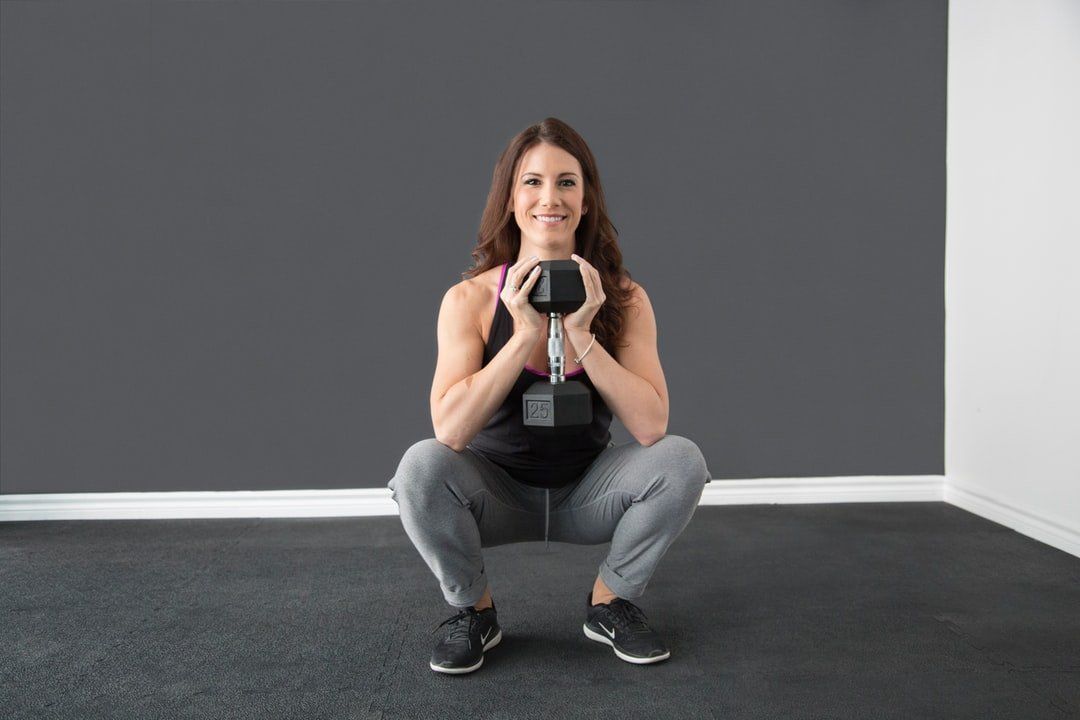6 Psychological Benefits of Exercise
Benefits and mechanisms

Exercise is a great way to improve your physical health, but it can also have a profound impact on your mental and emotional well-being. Here are six key psychological benefits of exercise:
- Reduced stress and anxiety: Exercise is a natural and effective way to relieve stress and anxiety. Physical activity releases endorphins, which have mood-boosting and pain-relieving effects. Exercise can also help to distract you from worries and negative thoughts.
- Improved mood: Regular exercise can have a positive impact on your mood and can help to reduce symptoms of depression. Exercise can also help to increase feelings of self-efficacy, self-esteem and confidence.
- Enhanced cognitive function: Exercise has been shown to improve cognitive function, including memory, attention, and decision-making. Physical activity increases blood flow to the brain, which helps to nourish brain cells and promote growth.
- Better sleep: Exercise can help to improve sleep quality by reducing stress and promoting relaxation. Regular physical activity can also help to regulate your sleep-wake cycle.
- Increased energy levels: Exercise can help to increase energy levels by improving cardiovascular health and reducing fatigue.
- Enhanced social connection: Exercise can be a great way to connect with others and build social relationships. Joining a gym, taking a fitness class, or participating in team sports can provide opportunities to socialize and meet new people.
Reasons for the Benefits
Overall, exercise is a powerful tool for improving your mental and emotional health but why does it have these benefits? Take reduced stress and anxiety as an example. There are a number of proposed explanations, including neurochemical changes, stress hormone regulation, cognitive and psychological factors, improved sleep, and mindfulness:
Neurochemical Changes: Exercise triggers the release of endorphins, which have mood-boosting and pain-relieving effects. It also influences other neurotransmitters like serotonin and dopamine, which play roles in mood regulation and reducing anxiety.
Stress Hormone Regulation: Exercise can help regulate the hypothalamic-pituitary-adrenal (HPA) axis, the body's stress response system. Regular physical activity can lead to a blunted cortisol response to stress, meaning your body is less reactive to stressors over time.
Cognitive and Psychological Factors: Exercise provides a distraction from worries and rumination, allowing for a mental break and a shift in focus. It can also improve self-esteem and body image, contributing to a greater sense of well-being and reducing anxiety.
Improved Sleep: Regular exercise can improve sleep quality, which is crucial for stress management and emotional regulation.
Mindfulness: Certain types of exercise, such as yoga and tai chi, emphasize mindfulness and deep breathing, which can further promote relaxation and reduce anxiety. While those may have a more intentional focus on mindfulness, lifters, runners, swimmers, and other athletes can also incorporate mindfulness into their training. In fact, optimal training requires it.
Not only does exercise improve mood for many of the same reasons, but also because it promotes a sense of accomplishment, improves body image, increases self-efficacy, and promotes social interaction. It also improves cognitive function because of the following reasons:
Increased blood flow to the brain: By increasing
blood flow to the brain, exercise leads to more oxygen and nutrients being delivered to brain cells which supports brain health and cognitive function.
Neurotrophic factors: Exercise stimulates the production of neurotrophic factors, such as brain-derived neurotrophic factor (BDNF), which promotes the growth, survival, and differentiation of neurons.
Neurotransmitter regulation: Exercise influences
neurotransmitter systems in the brain, including those involved in mood, attention, and
cognitive processing. This regulation can enhance cognitive function and
protect against
age-related decline.
Stress reduction: Exercise helps reduce stress and anxiety, which can
negatively affect cognition.
Improved sleep: Regular exercise can improve sleep quality which can lead to improvements in memory consolidation and cognitive
restoration.
Neuroplasticity: Exercise promotes
neuroplasticity, the brain’s ability to reorganize itself by forming new neural connections.
Cognitive reserve: Exercise may contribute to
cognitive reserve, the brain’s ability to withstand age-related changes or damage. This reserve can help
maintain cognitive function even in the face of neurological challenges.
Social connections are an often overlooked benefit of exercise. Group fitness classes, team sports, and even walking groups provide structured environments for meeting new people with shared interests. These settings naturally foster interaction and conversation, making it easier to build relationships. Regular participation in exercise activities can also foster a strong sense of community with like-minded individuals. This sense of belonging can combat feelings of
loneliness and isolation.
Mindfulness and exercise
As one who practices mindfulness, I find the connections between exercise and mindfulness particularly interesting. The relationship between mindfulness and exercise is a subject of growing interest in scientific literature. Research indicates that both mindfulness practices and regular exercise contribute to improved mental health. Notably, studies suggest that combining mindfulness with exercise may yield the most significant benefits for psychological well-being.
Studies have shown that mindfulness and exercise share similar mechanisms that contribute to improved global mental health, including adaptive responses to stress. For instance,
Goldstein and colleagues (2018) concluded “what our study reveals is that: 1) mindfulness and exercise indeed affect mental health, and 2) mindfulness and exercise share common mechanisms of effect.” In this study, the researchers randomized 413 adults into three groups: mindfulness-based stress reduction (MBSR), moderate-intensity exercise, and a control group. The results indicate that mindfulness-based self-efficacy played a significant role in how both mindfulness and exercise programs improved mental health.
To better understand these results, it helps to have a deeper understanding of what mindfulness-based self-efficacy is. First, self-efficacy refers to an individual’s belief in their ability to succeed in specific situations or accomplish a task. It’s about confidence in one’s capacity to perform actions needed to achieve desired outcomes. In basic terms, mindfulness involves paying attention to the present moment with awareness and without judgment. It’s about being consciously aware of your thoughts, feelings, and bodily sensations. When put together, you get mindfulness-based self-efficacy, which is an individual’s belief in the ability to use mindfulness skills to cope with challenges, manage stress, and regulate their emotions. It’s the confidence that one can effectively apply mindfulness practices in their daily life to navigate difficult situations.
Mindfulness-based self-efficacy applies to exercise by influencing an individual’s confidence in their ability to use mindfulness skills during exercise to enhance their experience and achieve desired outcomes. It helps individuals trust their ability to
pay attention to their body’s signals during exercise, such as muscle fatigue, breathing, and heart rate, without judgment. It also fosters confidence in managing challenging
emotions or discomfort that may arise during exercise, such as frustration,
pain, or boredom. It strengthens the belief that one can stay present and focused on the exercise activity, even when distractions or negative thoughts arise.
Its role during exercise includes enhancing the
enjoyment of exercise. For instance, by staying present and accepting bodily sensations, individuals can experience greater enjoyment and satisfaction from exercise. Mindful awareness also reduces perceived exertion making said perceptions more accurate. It promotes
improved performance via enhanced
concentration and coordination. It increases exercise
adherence and motivation by fostering a positive and non-judgmental relationship with exercise. By being more mindful of the body's signals, one engages in better
form and technique and has a greater ability to know when to stop before pushing too hard which reduces their chances of injury. By being mindful of the body, and the moment, the stress reducing effects of exercise are amplified.
Key Takeaways
In short, exercise has several psychological benefits. Here are the key takeaways of this article:
Core Psychological Benefits:
- Reduces stress and anxiety: Through endorphin release and stress hormone regulation.
- Improves mood: Combats depression and enhances self-esteem.
- Enhances cognitive function: Improves memory, focus, and decision-making by increasing blood flow and stimulating the brain.
- Promotes better sleep: Reduces stress and regulates sleep cycles.
- Increases energy levels: Improves cardiovascular health and reduces fatigue.
- Fosters social connections: Provides opportunities for interaction and community building.
Underlying Mechanisms:
- Neurochemical changes: Exercise triggers the release of beneficial neurotransmitters.
- Stress hormone regulation: Helps the body manage stress more effectively.
- Cognitive and psychological factors: Provides distraction, improves self-image, and promotes a sense of accomplishment.
- Brain health benefits: Increases blood flow, stimulates neurotrophic factors, and promotes neuroplasticity.
Mindfulness and Exercise:
- Combined power: Combining mindfulness with exercise maximizes mental health benefits.
- Mindfulness-based self-efficacy: Confidence in using mindfulness during exercise enhances the experience and outcomes.
- Enhanced exercise experience: Mindfulness improves enjoyment, reduces perceived exertion, and enhances performance.
- Improved adherence and reduced injury: Mindful awareness of the body promotes better form and prevents overexertion. It also increases motivation.
Overall Message:
Exercise is a powerful and multifaceted tool for improving mental health. Understanding the mechanisms behind these benefits can motivate consistent participation. Integrating mindfulness into exercise can significantly amplify its positive effects. Social interaction gained from exercise is a very important part of overall mental health.











